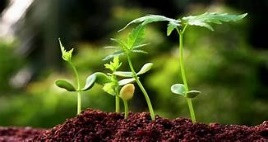A Review of the Ethnobotanical, Phytochemistry and Medicinal Values of Phragmanthera incana (Schum) Hemi-Parasitized in Southwestern Nigeria
http://www.doi.org/10.26538/tjnpr/v6i11.1
Keywords:
Lipid lowering potential, Weight reduction, Phytochemistry, Ethnobotanical, Mistletoe, Phragmanthera incanaAbstract
The ethnobotanical applications, phytochemistry and medicinal values of Phragmanthera incana (Schum), a specie of mistletoes and a hemi-parasitic plant was reviewed. The review compiled various ethnobotanical claims from traditional healers through a structured interview and scientific evidences on some of the claims. The ethnobotanical survey revealed that the leaves were used to treat hypertension (80%), diabetes (70%), insomnia (70%), weight reduction (96%), reducing blood lipids level (90%), and for general well-being (97%). The plant possesses some bioactive compounds and macro minerals. It has been scientifically validated for antimicrobial, antidiabetic and antihypertensive activities. The ethnobotanical use of P. incana as indicated by the survey, on diabetes, hypertension and insomnia and general well-being had been previously reported. In conclusion, there is need for further scientific validation of these
claims; clinical investigation and chemical characterization of the bioactive compounds.
References
Nickrent DL. Mistletoe Phytogenetics: Current relationships gained from analysis of DNA sequences. Proceedings of the
Western International Forest Disease Work Conference, Waikoloa, Hawai‟i; 2002; 48-57.
Adeshina SK, Illoh HC, Johnny II, Jacobs IE. African mistletoes (Loranthaceae); Ethnopharmacology, chemistry and medicinal values: An Update. Afr J Tradit Complement Altern Med. 2013; 10(4):161–170.
Adedapo ADA, Ajayi AM, Ekwunife NL, Falayi OO, Oyagbemi A, Omobowale TO, Adedapo AA. Antihypertensive effect of Phragmanthera incana (Schum) Balle on NG-nitro L-Arginine methyl ester (L-NAME) induced hypertensive rats. J Ethnopharmacol. 2020; 257:112888.
Kafaru E. “Mistletoe- an example of an „All Purpose herb‟ Herbal Remedies”, Guardian newspaper. 1993; 3:11.
Nwude N and Ibrahim MA. “Plants used in traditional veterinary medical practice in Nigeria”. J Veterinary Pharmacol and Therap. 1980; 3(4):261-273.
Ogunlabi O, Adegbesan B, Ajani E. Hypolipidermic potentials of mistletoe exudates in Monosodium glutamate-induced hyperlipidermia in rats. FASEBJ 2014; 28:1.
Ogunmefun OT, Fasola TR, Saba AB, Oridupa OA. The ethnobotanical, phytochemical and Mineral Analyses of Phragmanthera incana (Klotzsch), A species of mistletoe growing on three plant hosts in South-Western Nigeria. Int J Biomed Sci. 2013; 9(1):33-40.
Burkill HM. The useful plants of West Tropical Africa. Royal Botanical Gardens Kew.1985; 3.
Ameer OZ, Salman IM, QuekKo Jin AM. Loranthus ferrugineus: a mistletoe from traditional uses to laboratory bench. J Pharmacop. 2015; 18(1):7-18.
Agrawal M, Nandini D, Sharma V, Chauhan NS. Herbal remedies for treatment of hypertension. Int J Pharma Sci Res. 2010; 1(5):1- 21
Kültür Ş. Medicinal plants used in Kırklareli province (Turkey). J Ethnopharmacol 2007; 111(2):341–364
Bright EO and Okusanya BA. Infestation of economic plants in Badeggi by Tapinanthus dodoneifolius (DC) Danser and T. globiferus (A. Rich) Van Tiegh. Niger J Weed Sci. 1998; 11:51- 56.
Fasanu PO and Oyedapo OO. Phragmanthin-peptide from fresh leaves of African mistletoe (Phragmanthera incana): purification and metabolic activities. Phytopharmacol and Therap Val. 2008; I:39- 47.
Ogunmefun OT, Saba AB, Fasola TR, Oridupa OA, Adarabioyo MI. Hypoglycemic Effect of Phragmanthera incana (Schum.) Balle on Alloxan-induced diabetic albino rats. Int J Med Plants Res. 2016; 5(1):173-177.
Adeyemi MM and Osilesi O. Nutritional composition of Phragmanthera incana (Schum) leaves selected from four host trees. J Phytomedicine Ther. 2022; 21(1):772-783.
Ogunmefun OT, Ekundayo EA, Ogunnusi TA, Olowoyeye AH, Fasola TR, Saba AB, Antimicrobial Activities of Phragmanthera incana (schum.) Balle, a Mistletoe Species Harvested from Two Host Plants against Selected Pathogenic Microbes. Ann Res & Rev in Bio. 2015; 8(3):1-10.
Kumar S, Bahchi GD, Darokar MP. Antibacterial activity observed in the seeds of some coprophilus plants. Int J Pharmacol 1997; 35:179-184.
Sanni O, Erukainure OL, Oyebode OL, Islam MdS. "Antihyperglycemic and ameliorative effect of concentrated ot waterinfusion of Phragmanthera incanaleaves on type 2 diabetes and indices of complications in diabetic rats", J Diabetes Metab Disord. 2019; 18:495-503.
Sanni O, Erukainure OL, Oyebode OL, Koorbanally NA, Islam MdS. Concentrated hot water-infusion of Phragmanthera incana improves muscle glucose uptake, inhibits carbohydrate digesting enzymes and abates Fe2+- induced oxidative stress in hepatic tissues. Biomed & Pharmacother. 2018; 108:417-423.
Ogunmefun OT, Fasola TR, Saba, AB, Oridupa OA. The Toxicity Evaluation of Phragmanthera incana (Klotzsch) Growing on Two Plant Hosts and Its Effect on Wistar Rats‟ Haematology and Serum Biochemistry. Acad J Plant Sci. 2013; (2):92-98.
Ogunmefun OT, Fasola TR, Saba AB, Oridupa OA, Adarabioyo MI. Haematology and serum biochemistry of alloxan induced diabetic rats administered with extracts of Phragmanthera incana (Schum.) Balle. Afr J Pharm Pharmacol. 2017; 11(43):545-553.

Published
How to Cite
Issue
Section
License

This work is licensed under a Creative Commons Attribution-NonCommercial-NoDerivatives 4.0 International License.

















